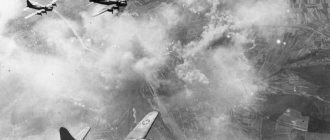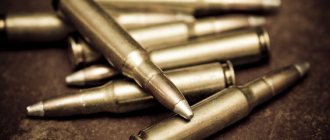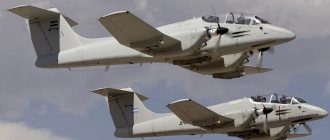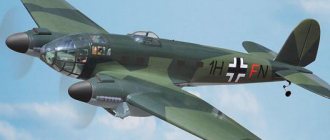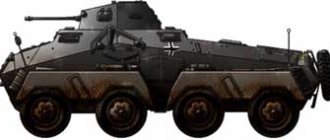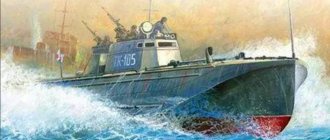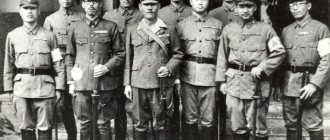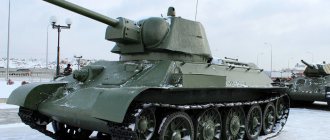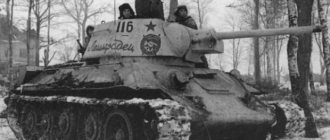Author: zaCCCPanec
12 October 2022 08:46
Community: Military
Tags: aviation stories about weapons history pages heavy bombers
11413
37
So, heavy monsters carrying tons of bombs over vast distances. Yes, that's them. Four-engine colossuses, bristling with trunks, with large crews, armored and in general - the beauty and pride of any aviation.
0
See all photos in the gallery
Not all countries were able to create such aircraft. The French, for example. They had a very, very decent project from Breguet Br.482 and even assembled copies of the Flea MV.162, but things didn’t go beyond one or two copies. Alas, Breguet's bomber looked very solid.
0
"Breguet" Br.482
×
Therefore, we will consider those aircraft that actually fought on the fronts of World War II. It doesn’t matter with what success, but they fought.
0
"Bloch" MV.162
Heinkel He.177 "Greif". Germany, 1939
0
I don’t know how to properly treat the conclusions of home-grown experts who call the Griffin a failure. And it doesn’t matter at all, the failure of Heinkel, the Ministry of Aviation, Goering, Hitler... The main thing is failure. Meanwhile, the “failure” was produced in quantities of more than 1000 units, fought, but in fact the plane was wonderful. In general, in it, Heinkel’s gang managed to implement absolutely all the technical innovations of that time, so that their energy could be used for peaceful purposes...
0
But no ingenious design solutions will help if the aviation community itself is mired in behind-the-scenes games. Well, the fact that long-range/strategic aviation turned out to be an unbearable load for German industry... So it is that in the USSR they were unable to produce more than a hundred Pe-8s for various reasons. And what was so unusual about “Griffin”?
0
Twin propulsion system. Yes, at the beginning I said that today we would talk about four-engine heavy bombers. I didn’t lie, the Non-177 had four engines. More precisely, two 12-cylinder V-shaped units, created on the basis of the DB 601, were mounted side by side and operated on a common shaft through a gearbox connecting both crankshafts. And it was called DB 606. Remote control of rifle installations that had significantly less aerodynamic drag compared to manually aimed turrets. Very helpful.
0
The He.177 was considered a dangerous and unfinished aircraft due to problems with the engines, but the pilots from the specially created “test squadron 177” had a different opinion. They received the bomber very well, which was easy to fly. He.177A-3/R3 became the first carrier of a guided weapon - the Henschel Hs 293 guided bomb. It could carry three such bombs, two under the consoles and one under the fuselage. By the way, it was the “Griffins” that successfully worked as UABs on Italian ships.
0
Advantages: good flight and combat qualities. Disadvantages: general lack of development of the machine.
Frontline bombers 1918–1945
Despite the popularity of the Douai doctrine, the majority of the military believed that it was impossible to win through strategic bombing alone, and ground combat would remain the main type of combat operations. And to support ground troops, front-line bombers and attack aircraft are needed, for which accuracy of strikes is more important than bomb load, and maneuverability is more valuable than range.
Soviet Pe-2 dive bomber
For accurate bombing, the plane fell vertically towards the target (dive), and after dropping the bomb, it sharply gained altitude. For such impacts since the 1930s. Dive bombers are being built - maneuverable, durable, able to withstand overloads during sharp maneuvers, with devices to slow down the dive, and a powerful engine capable of “pulling” the aircraft out of the dive.
In 1935, the Germans introduced a dive bomber, the Ju 87 . In 1939–1942 The Ju 87 successfully made its way to tank wedges, but by the middle of the war, due to its low speed, it became easy prey for Soviet fighters: for example, in the battle over the Kursk Bulge, junior lieutenant A. Horovets shot down 9 Junkers.
German Junkers Ju 87 dive bomber
The successes of the Ju 87 at the beginning of World War II in Poland and France prompted the USSR to develop its own dive bomber, and in 1940 the Pe-2, designed by V. Petlyakov, appeared. It was the first Soviet aircraft with electrically controlled mechanisms. Electric motors regulated the pitch of the propellers, controlled the radiator flaps, valves, pumps, and, at the command of the automatic dive, released and retracted the aerodynamic brakes. Thanks to its excellent flight qualities, the Pe-2 was used both as a reconnaissance aircraft and as a fighter. But in the first days of the war, the Pe-2 was just entering service, and began to be used en masse only in 1942.
Piaggio P.108B/A. Italy, 1939
0
Living beautifully cannot be prohibited, even in such a frankly poor country as Italy. In general, it is difficult to say why they need heavy bombers. But - for the prestige of the Duce, Mussolini wanted to have at least one air group, and then, you see, it will come in handy... Several forms of projects were developed, it even got to the point that they wanted to build an American B-17 under license, but it didn’t happen. But in the end, the . Although - well, very similar to the B-17...
0
Despite the obvious borrowing of individual parts, the Italian “flying fortress” turned out to be more difficult to control and the performance characteristics were much worse. But in general, it was a fairly modern aircraft, made using advanced technology. In general, the Italians looked at the Germans' use of the FW-200 Condor as patrol and anti-submarine aircraft. There was a reason, no one canceled the eternal rival France, and in the Mediterranean the British sat as if at home.
0
Hot Italian guys were going to hang as many as three torpedoes from the plane. One in the bomb bay, and two on the external units. The unit received the famous name (how could it be otherwise in that Italy) “Knights of the Ocean”, and the commander was the son of the Duce, Bruno Mussolini. True, Bruno did not command the “Knights” for long. When the hydraulic system failed during one of the training flights, the plane crashed and Mussolini Jr. died.
0
The disaster and the death of the Duce's son greatly undermined confidence in the new bomber. The production of R.108B, which was already going neither shaky nor slow, slowed down even more. But some of the equipment was replaced with more reliable, German equipment. The R.108B bomber remained in service with the Italian Air Force until Italy's withdrawal from the war, and its transport version served in the Luftwaffe until Germany's surrender. But the aircraft’s combat career could not be called successful; it was used only sporadically and without much zeal by Italian pilots.
0
In general, the R.108B can be called a completely modern aircraft, but because of the war it was not brought to fruition. Unreliable engines and equipment, very mediocre and difficult control Italy was not able to maintain numerous strategic aviation, and a few combat sorties of the only R.108B squadron, naturally, could not have any influence on the course of military operations. But you can just tick the box: the Italians were able to create and mass-produce a heavy long-range bomber.
0
Pros: didn't find any. Disadvantages: overall a “crude” plane.
Petlyakov Pe-8. USSR, 1941
0
We just recently talked about the Pe-8, all that remains is to do a short “take”. It was a very good car, with its own “zest”. Its only drawback was the eternal leapfrog with engines and a small number of aircraft produced. In principle, there were no targets for the Pe-8. The bomber could not work in the front-line zone, since on the one hand, there was someone to do this, on the other, bombing point targets from a high altitude did not make sense at all.
0
As a result, the actual targeted use of the Pe-8 in single sorties did not play any role in the war. But – as a “goal of prestige” it’s quite. It seems to me that the Pe-8 brought great benefit by transporting crews to ferry aircraft to the UK.
0
Advantages: good performance characteristics, good weapons and bomb load. Disadvantages: weak point - assorted engines and small series.
Alternative aircraft option - Arado Ar 234C
In conclusion, I present to you an alternative aircraft model based on a real project. Unlike the real car, this alternative is equipped not with two, but with four jet engines. The author does not specify what kind of engines and what the dynamic characteristics of the car will be with them.
Arado Ar 234C
Arado Ar 234C
Arado Ar 234C
Arado Ar 234C
Arado Ar 234C
Arado Ar 234C
Arado Ar 234C
Arado Ar 234C
Arado Ar 234C
Arado Ar 234C
Arado Ar 234C
Arado Ar 234C
Boeing B-17 "Flying Fortress". USA, 1936
0
"Flying fortress". What else can you add? Indeed, a fortress. Indeed, flying. The only problem with the B-17 throughout its service was its vulnerability to frontal attacks. The aircraft was created as a land bomber, focused on working against ships. That is, capable of causing damage to a ship of any class, including the largest.
0
The Flying Fortress immediately became a legend due to its ability to return to the airfield even after significant damage. Indeed, durability and reliability have become the hallmark of the B-17. Cases were recorded when “Fortresses”, crushed by German fighters, crawled on two (at best) engines out of four. And it happened that on one. The B-17 entered the war in 1941 with the Royal Air Force. And they were engaged in daytime bombing of German factories.
0
The Fortresses dropped 650,195 tons of bombs in Europe alone. By comparison, B-24s dropped 451,690 tons, and all other American aircraft dropped another 420,500 tons. Accordingly, the Germans hit the “Fortresses” so that only the duralumin flew in shreds. The USAF's admitted losses alone amounted to 4,752 B-17s, effectively a third of the total.
0
Only on October 14, 1943, on Black Thursday, German fighters and air defenses shot down 59 vehicles out of 291 that attacked factories in Germany. Another Fortress sank in the English Channel, 5 crashed in England and 12 were written off due to battle or landing damage. A total of 77 vehicles were lost. 122 bombers were so finished that they needed major repairs. Only 33 B-17s returned undamaged. Decent plane. I went through the whole war, and I went through it with dignity.
0
Advantages: survivability, flight performance, weapons. Disadvantages: Vulnerable to attacks from the front.
Main serial modifications
- standard serial DB-3F (1939-1940 production) - with an M-88 engine, crew of 3 people.
- serial DB-3B (1941 release). More advanced M-88B engines were installed, and a second gunner appeared in the crew.
- serial DB-3T (IL-4T) - torpedo bomber of the Navy Air Force. This model had outboard holders for torpedoes and sea mines. It was used for long-range maritime reconnaissance, laying minefields or attacking enemy military and transport ships, and bombing enemy ports.
- IL-4TK. This model (developed in 1943) can hardly be called serial. However, the Il-4TK high-altitude reconnaissance aircraft, equipped in the tail section with special photographic equipment, still played a role in the development of many offensive operations.
Consolidated B-24 "Liberator"
0
The story began in 1939, when the US Air Force began to figure out what they would replace the B-17 with. The result was a somewhat smaller aircraft, but with a greater flight range and speed. The Liberators, like the Fortresses, began fighting in Britain. Moreover, they were even armed like British aircraft, that is, the B-24’s armament consisted of six 7.69 mm machine guns: two in the tail, one in the nose, one in both side points and one in the hatch below.
0
Not enough, in my opinion. The 12.7 mm Brownings are still more confident units. The British began to massively convert B-24s into anti-submarine aircraft, Doenitz’s boys had already really begun to pester the empire with their “wolf packs”. A container with 20-mm cannons was placed under the front part of the fuselage, radars were installed on the vehicles, the antennas of which were mounted in the nose and on the wings, and depth charges were mounted in the bomb bay.
0
But for the most part, the B-24 did the same thing as the B-17. That is, he carried tons of bombs and dumped them on German cities. Well, or to the islands occupied by the Japanese. However, German and Japanese fighter pilots quickly discovered that the Liberator, like the Fortress, was completely unprotected from frontal attacks. And if the Germans were so-so with the frontal ones, then the Japanese began to shoot down the B-24 so much that they had to rearm the plane. It didn't help much, really. Although two more 12.7 mm machine guns were installed and fired forward, they had very large dead zones.
0
But nevertheless, it turned out to be impossible to stop the States, which took a running start in aircraft production. And modernizations followed one after another, and the number of four-engine monsters was simply stunning. And here there is such a nuance: it was precisely the release of a huge number of long-range heavy bombers, which were later replaced by strategic bombers, that a new US military doctrine was born. In general, the B-24, just like its predecessor, went through the entire war on all fronts, where aviation from both the United States and Great Britain took part.
0
Advantages: speed, survivability, range. Disadvantages: Vulnerable to attacks from the front.
Performance characteristics of the Arado Ar.234 B-2:
Dimensions: wingspan - 14.1 m, length - 12.6 m, height - 4.3 m. Wing area - 25.5 sq. m. Aircraft weight, kg - empty - 5,200 - normal take-off - 8,417 - maximum take-off - 9,858 Engine type - 2 Jumo-004B turbojet engines, thrust 900 kgf each. The maximum speed at an altitude of 6000 meters is 740 km/h. Practical range – 1,620 km Practical ceiling – 11,500 m. Crew – 1 person Armament: 2x20-mm MG 151 cannons in the tail of the aircraft, firing backwards (200 rounds per barrel). Bomb load: up to 1,500 kg. on an external sling.
(Source - https://topwar.ru/15507-arado-ar234-blitz-pervyy-v-mire-reaktivnyy-bombardirovschik.html)
Handley Page "Halifax". Great Britain, 1941
0
"Halifax", although it was late for the start of the war, nevertheless plowed it until the very last day. Moreover, not only in the Royal Air Force. The bomber was in service with the Air Forces of Australia, New Zealand, and Canada. The Halifaxes very timely replaced the Stirlings, which were clearly targets for German fighters and, in fact, could not oppose anything to them.
0
The Halifaxes carried out their first raid on the night of March 11-12, 1941, on the French port of Le Havre captured by the Germans. This was the debut, which was followed by many other operations, the essence of which was the classic bombing. During their service with the Royal Air Force, the Halifaxes flew 82,773 sorties and dropped 224,000 tons of bombs. A total of 6,178 Halifaxes of various modifications were built; losses amounted to 1,833 aircraft.
0
In general, the Halifax turned out to be a very good multi-purpose aircraft. He fought against submarines in anti-submarine configuration, towed gliders, dropped cargo to partisans in Yugoslavia and Poland, and landed troops. And this is one of the few aircraft whose career continued after the war as a cargo and passenger aircraft.
0
Advantages: strong average. Disadvantages: range and weapons.
Notes[edit]
- Winchester, Jim. "Sikorsky Ilya Muromets." Biplanes, Triplanes and Seaplanes (Aviation Factfile)
. London: Grange Books 2004. ISBN 1-84013-641-3 - David, Donald ed. Complete encyclopedia of world aviation. Noble and Barnes, New York, 1977 ISBN 0-7607-0592-5
- Thetford, Owen, British Naval Aircraft Since 1912: 1991 Naval Press Institute, Annapolis, MD ISBN 1-55750-076-2
- Boyer, Chaz. Handley Page Bombers: 1992 Aston Publications Bourne End, Bucks, England: ISBN 0-946627-68-1
- Bruce, J.M. Handley Page 0/100 and 0/400: Historic Military Aircraft No. 4 Flight; February 27, 1953, Vol. LXIII. Issue No. 2301
- Cole, Christopher and E. F. Cheesman. British Air Defense 1914–1918
. London: Putnam, 1984. ISBN 0-370-30538-8 - G. W. Haddow & Peter M. Grosz German Giants, The History of R-Planes 1914-1919
, Putnam & Company Limited, London 1962 - Andrews, C. F. and Eric B. Morgan. Vickers Aircraft Since 1908, Second Edition
. London: Putnam, 1988. ISBN 0-85177-815-1 - ^ ab Tate, Dr. James P. The Army and its Air Corps: Army Aviation Policy 1919–1941.
] Maxwell Air Force Base, Alabama: Air University Press, 1998. ISBN 1-4289-1257-6. - Jump up
↑ Chant, Christopher.
Combat aircraft of the twentieth century.
London: Tiger Books International, 1996. ISBN 1-85501-807-1. - Bowers, Peter M. Fortress in the Sky
, Granada Hills, CA: Sentry Books, 1976. ISBN 0-913194-04-2. - Bowers, Peter M. Fortress in the Sky
, Granada Hills, CA: Sentry Books, 1976. ISBN 0-913194-04-2 - Craven. Wesley, James Keith The Army Air Forces in World War II, Volume Two: Europe, Torch at Point Blanc, August 1942 - December 1943 Chicago: University of Chicago 1954 ISBN 0-912799-03-X
- Birdsall, Steve. B-24 Liberator
. New York: Arco Publishing Company, Inc., 1968. ISBN 0-668-01695-7. - ↑
Dugan, James and Carroll Stewart: The Ploiesti Raid: The Great Air-Land Battle of August 1, 1943, Brassey, Washington, DC. 1998 ISBN 1-57488-510-3 - cite Davis, Norman; Uprising '44: Battle for Warsaw. 2004 Pan Macmillan London ISBN 978-0-330-48863-1
- Jacobs, Peter. History of Lancaster
. London: Arms & Armor Press, 1996. ISBN 1-85409-456-4. - Holland, James: .Dam Busters Bantam Press, 2012 ISBN 978-0-552-16341-5
- Flower, Stephen. "Barnes Wallis Bombs". 2004; Tempus, Strood. ISBN 0-7524-2987-6
- Willis, David. "Boeing B-29 and B-50 Superfortress." International Air Power Review
, Volume 22, 2007, Westport, CT: AIRtime ISBN 1-880588-79-X - Willis, David. "Boeing B-29 and B-50 Superfortress." International Air Power Review
, Volume 22, 2007, Connecticut: AIRtime ISBN 1-880588-79-X - Malkasian, Carter, Korean War 1950-53. Key stories. Fitzroy Dearborn London, Chicago 2001. ISBN 1-57958-364-4
- Efim, Gordon, Mikoyan-Gurevich MiG-15, Midland Publishing, Leicester, UK 2005 ISBN 1-85780-105-9
